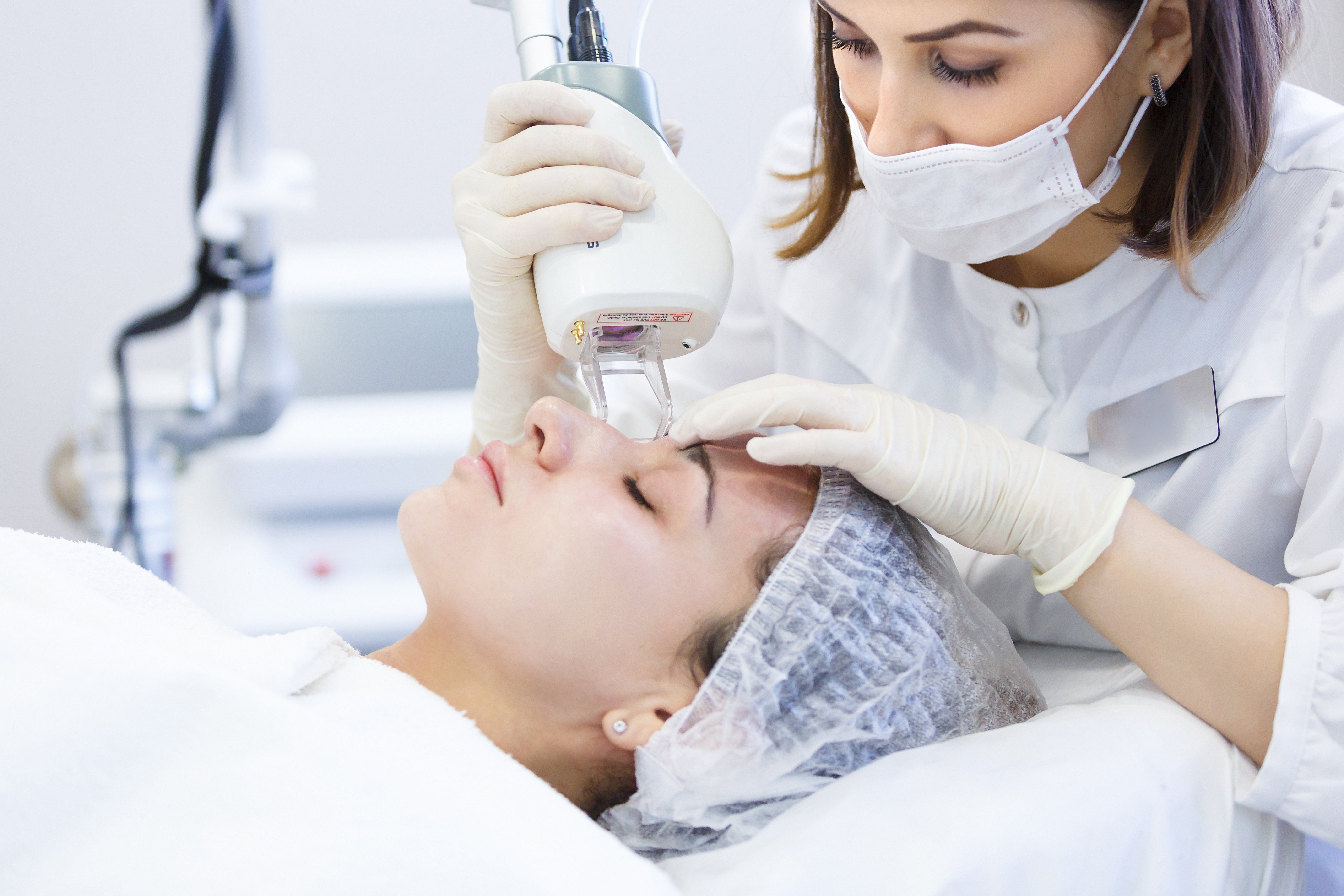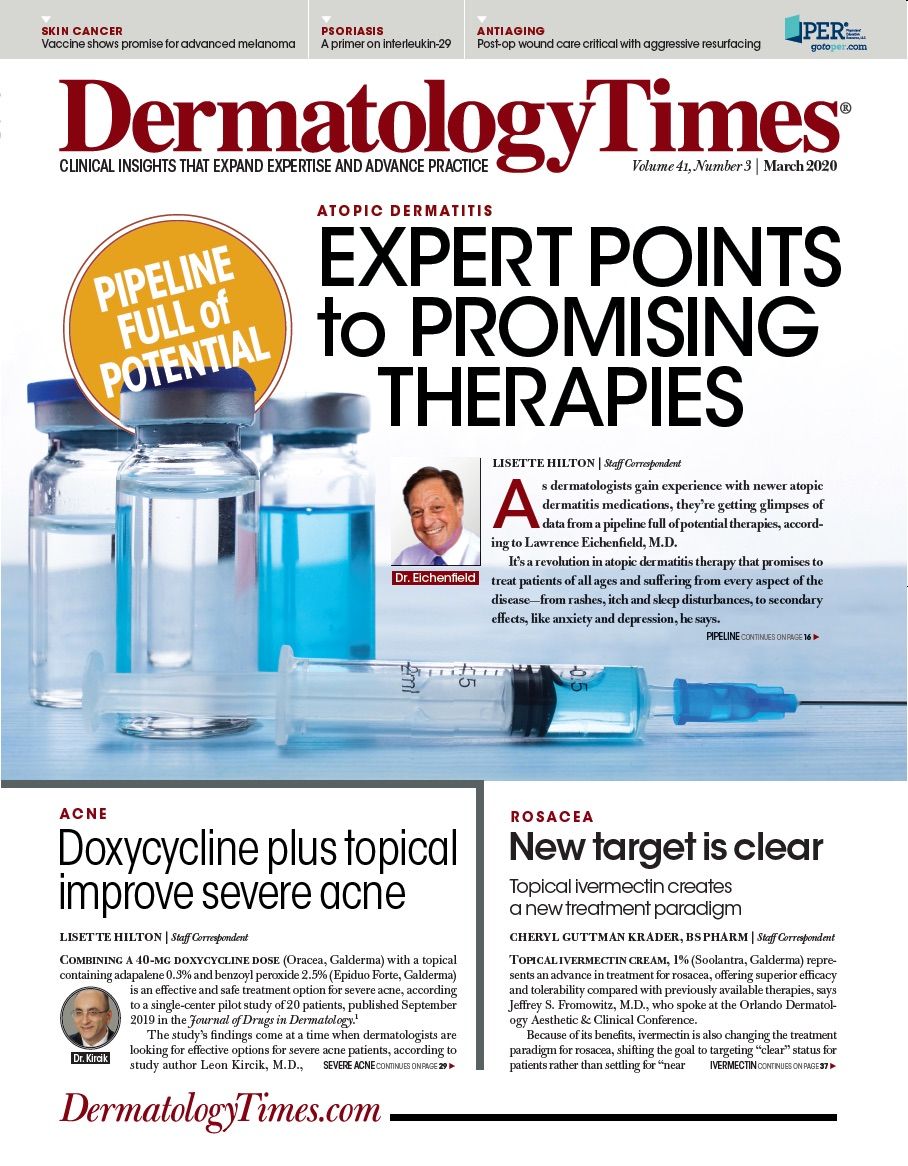- Case-Based Roundtable
- General Dermatology
- Eczema
- Chronic Hand Eczema
- Alopecia
- Aesthetics
- Vitiligo
- COVID-19
- Actinic Keratosis
- Precision Medicine and Biologics
- Rare Disease
- Wound Care
- Rosacea
- Psoriasis
- Psoriatic Arthritis
- Atopic Dermatitis
- Melasma
- NP and PA
- Skin Cancer
- Hidradenitis Suppurativa
- Drug Watch
- Pigmentary Disorders
- Acne
- Pediatric Dermatology
- Practice Management
- Prurigo Nodularis
- Buy-and-Bill
Publication
Article
Dermatology Times
Postprocedural wound care critical in resurfacing
Author(s):
Maximizing results and safety of aggressive resurfacing procedures requires painstaking postprocedural care, says Dallas-based plastic and reconstructive surgeon A. Jay Burns, M.D.

Maximizing results and safety of aggressive resurfacing procedures requires painstaking postprocedural care, says Dallas-based plastic and reconstructive surgeon A. Jay Burns, M.D. His favorite postoperative wound dressing is no longer available; so he says he has had to reconfigure this portion of his treatment regimen to include gas-permeable silicone gels.
RELATED: A guide to wound care
Without meticulous postoperative wound care, the most careful, well-researched resurfacing technique will fail.1 He shared an anecdote following a teaching experience in France many years ago at which he said he resurfaced to 600-800 μ deep in places. Years later, the French surgeon hosting the conference told him he no longer performed such aggressive procedures because the two patients that Dr. Burns had treated developed thick postprocedural scarring along the mandible. He asked if the post-procedural care was carried out as he had showed but was told the patients were left to scab.
“Can you imagine going that deep and just letting them scab up?” he asks.
Dr. Burns says he was a huge fan and frequent user of Flexan (Polymedical Industries) occlusive dressing, which is no longer produced.
His post-procedural regimen, described in January 2019 in Plastic & Reconstructive Surgery,2 includes applying Flexan after aggressive erbium: YAG resurfacing. On postoperative day one, he would remove the flexible sheet, meticulously debride the underlying skin and replace the existing dressing. On day three, he would debride again and instruct patients whose wounds were healing well to use petrolatum or an EltaMD (Colgate-Palmolive) post-laser kit to keep the skin moisturized. If patients were noncompliant or had slow-healing wounds, he typically replaced the dressing on day three and removed it on day five.
Regarding complications, Suchai Sriprachya-Anunt, M.D., Pornkasem Skin and Laser Center (SS-A), Bangkok, Thailand, and colleagues have reported that using triple antibiotic and Silon-II (Bio Med Sciences) after aggressive laser resurfacingled to an infection rate of 4.3%.3 Conversely, Dr. Burns studied 102 patients (unpublished) and discovered just one infection (fungal).
RELATED: Fractional resurfacing beyond the face
“The difference was, Dr. Fitzpatrick was just removing the Silon and putting it back on. Without any debridement, you’re asking for trouble.”
To replace the Flexan, he has tried every “Flexan-like” dressing available, but none have worked as well. They weren't semi-permeable and didn’t have the characteristics that would provide a barrier but yet breathe, he says. Flexan also enhanced epithelial migration to achieve 40% faster healing and promoted enzymatic autolytic debridement, he adds.
VALUE OF SEMI-PERMEABILITY
As a plastic surgeon, he initially thought that petrolatum or Aquaphor (petrolatum plus water, Beiersdorf AG) would suffice. He says he tried this for a while but found that not all moist dressings are the same.
Total occlusive dressings are clearly superior to dry healing and scabbing, he explains, but they’re messy, hot and uncomfortable. As such, he finds them inferior to gas-permeable semiocclusive silicone gels, which are FDA-cleared as class I medical devices.
Gas-permeable silicone gels such as Stratacel and Stratamed (Stratpharma) are chemically inert, with no pH value or susceptibility to thermal or oxidative degradation, Dr. Burns says. These materials are not absorbed through the skin or gastrointestinal tract, he adds, and they’re hydrophobic, antimicrobial, bacteriostatic and highly biocompatible.
Dr. Burns prefers gas-permeable gel over sheet formulations, he says, because sheeting leaves coverage gaps when applied over uneven surfaces.
RELATED: Future of skin resurfacing lies in drug delivery, postprocedural care
“But the liquid goes on then gets into every cranny. And when it dries, it makes a structural barrier that is gas-permeable,” he says. “As I began to think about it, it’s a lot like Flexan. It has similar properties. It causes less pain and less buildup of heat because it breathes. And it promotes faster healing and infection control.”
Thicker gel options provide less occlusion, but greater binding capability for open wounds and de-epithelialized skin, such as a superficial second-degree burn, he says. Conversely, less viscous options provide more occlusion for partially epithelialized. skin and skin post-fractionated procedures.
In a 20-patient post-microneedling study, Stratacel performed significantly better than petrolatum in terms of erythema (p<0.001) and patient preference (p<0.008).4 Dr. Burns attempted to perform a 10-patient, split-face study of Stratamed versus petrolatum after full-field laser resurfacing. However, he had to stop after seven patients due to overwhelming patient and nurse preference for the silicone gel. He may never publish the results.
“I just needed to know what to do because I needed a new dressing. But it was pretty powerful,” he says.
Given the depths to which he performs laser resurfacing, adds Dr. Burns, seeing less redness three weeks post-procedure was an unexpected surprise with the silicone gel. If such products work after full-field ablation, he explains, perhaps they will provide similar advantages after fractional ablative treatments. Granted, says Dr. Burns, gas-permeable silicone gel may not be the only answer.
After gaining additional experience with Stratamed, he says, it performs excellently in the early exudative phase.
“But at three or four days, I have some patients who look like they’ve got wrinkles because it’s not moist enough, even if they supplement the silicone with water spritzing. At that point, the only thing I know to do is to go back to petrolatum, just for two to three days to get them through that really dry inflammatory phase.”
Disclosures:
Dr. Burns is a consultant for Sciton.
References:
1. A Jay Burns MD. “Best Practice to Heal Compromised Skin Immediately after Deep Laser Resurfacing Procedures,” The Cosmetic Bootcamp. June 21, 2019. Aspen, Colorado.
2. Sanniec K, Afrooz PN, Burns AJ. Long-term assessment of perioral rhytide correction with erbium: YAG laser resurfacing. Plast Reconstr Surg. 2019;143:64-74.
3. Sriprachya-Anunt S, Fitzpatrick RE, Goldman MP, Smith SR. Infections complicating pulsed carbon dioxide laser resurfacing for photoaged facial skin. Dermatol Surg. 1997;23:527-35.
4. Gold MH, Biron J, Thompson B. Randomized, single-blinded, crossover study of a novel wound dressing vs current clinical practice after percutaneous collagen induction therapy. J Cosmet Dermatol. 2019;18:524-529.






